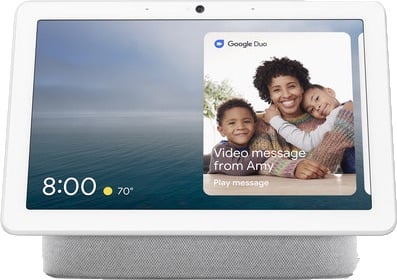Ultrasonic sensing is to thank for the new functionality.
What you need to know
- Google is rolling out ultrasonic sensing features to the Nest Hub and Nest Hub Max.
- The new feature will use high-frequency sounds to determine your proximity to the device and dynamically change what is on the display.
- Some examples include showing media controls as you are closer or making text for timers larger as you get further away.
Google's ultrasonic sensing feature has just begun rolling out to the Nest Hub and Nest Hub Max. With this new feature, it will allow the Nest-branded smart displays to dynamically change what appears on screen as you get closer or further away from the device.
For example, when setting a timer, the smart displays will now be able to show controls when you are close enough to reach them. As you back away, the controls will disappear and the remaining time will get larger, making it easier to see at a distance. It can also do handy things like expand weather cards, show controls during media playback, and more based on your proximity to the device.
For the Nest Hub Max, determining your distance from the display would be an easy task because of the built-in camera. However, the Nest Hub lacks a camera, which is why Google uses ultrasonic sensing that sends out high-frequency chirps and listens for feedback with the mics to detect when someone is nearby. It also means you can use this on the Nest Hub Max even if you disable the camera.
One downside to this is that since Google cannot determine who is nearby, it won't show personalized recommendations on the Nest Hub like it can when using face detection on the Nest Hub Max. One more thing worth noting is you won't have to worry about your pet's ears with the high-frequency noises. Google confirmed with Engadget "that even though the frequency used here is something dogs can hear, it's similar to typical noise in the home like that from a fridge."
Big screen smart display
Nest Hub Max
A Google smart display with a camera
Google's latest smart display is anything but ordinary. It stands out from the crowd with an ambient EQ display, facial recognition, and hands-free gestures to control media playback.
from Android Central - Android Forums, News, Reviews, Help and Android Wallpapers



0 comments: